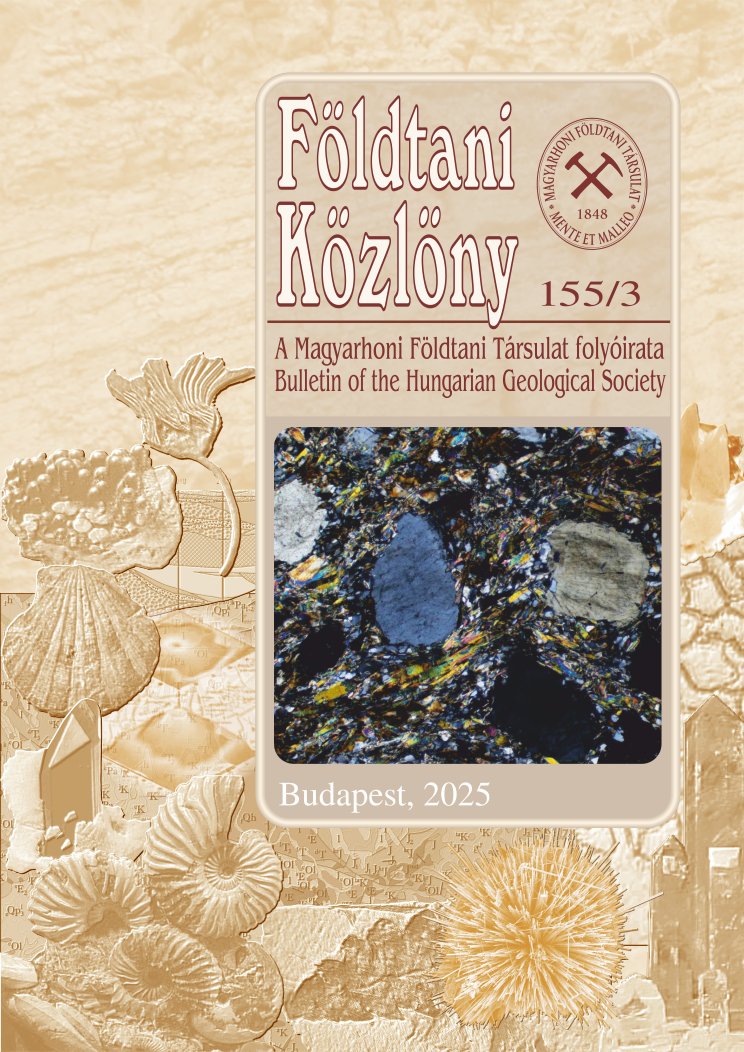The crystal caves of Nagyharsány and Beremend, and genetic investigation of their precipitations
Abstract
The present paper examines 2 crystal caves (which were discovered only a few years ago) of the Villány Hills, situated
in the southern part of Hungary. Here there are favourable conditions for the mixture of corrosion on the rims of big basins
covered by water-tight strata and the mountains which consist of karstifiable rocks. In order for the caves to form, the
existence of tectonic fissures was necessary, because this is where the stream and mixture of solutions could start (JAKUCS
1948, LEÉL-ŐSSY S. 1957). In line with TAKÁCSNÉBOLNER, in SZÉKELY (2003), on the basis of the observations of the present
investigation the Beremend Crystal Cave is a typical hydrothermal (thermal karst) cave system; it originated due to a mixture
of corrosion with a labyrinth-type network of passages characterized by sudden changes of size, by frequent niches and by
an extraordinarily rich and variegated ensemble of minerals and forms; the latter were partly a result of hydrothermal effects.
The crystal cave covers a small area and has no big chambers. The passages reach the current karst water level in the Tavasterem (Lake Chamber). The traces of the thermal influence were proved by stable isotope measurements.
The evaporation of the warm karst water provided the possibility for the creation of corrosional niches, and these have
also recently appeared in the upper sections of the cave. The active corrosional effect can be observed in the upper part of
the cave, close to the surface, where a weathered crust and the absence of formations on the cave walls are typical. The
lower, recently developed part of the cave is abounds with minerals produced by precipitations. Aragonite (precipitated
from the aerosol) and huntite — as the last products of the hydrothermal crystallization — are typical for the cave system.
During the research, the mineral precipitations were studied in thin sections and, by using of X-ray diffraction, stable
isotope and optical emission measurements (in addition to the percolation conditions) were analyzed.
The investigations were especially extensive in the Nagyharsány Crystal Cave. The upper section of the cave is of an
essentially tectonic origin, characterized by big chambers bordered by straight lines. Its lower section came into being
alongside the sliding of a bedding plane. Following the strong tectonic preformation, the thermal karst corrosion played
role in cave forming and mineral genesis.
The connection with the thermal waters in the Nagyharsány Crystal Cave is verified by the temperature of the air of
the cave, which is higher than the annual average temperature at the surface. The level of the thermal water in the cave is
not known, but the temperature gradually increases towards the deeper levels.
The upper section is characterized both by niches and angular forms, while in the lower sections niches and rounded
surfaces are evident. On the upper level more generations of the formations can be distinguished. The surfaces of these
different generations of formations are mainly covered by glass-ball peastones, these determine the character of the upper
section of the cave. The ceiling of the cave is not rich with formations but straw stalactites linked with the fissures are present.
The tectonic preformation of the investigated two caves can be proved. The thermal water mineral associations verify
the thermal connection. In the Beremend Crystal Cave, the cave galleries have their origins in the corrosion caused by
thermal water flowing along tectonic lines. On the other hand, in the Nagyharsány Crystal Cave the recently discovered
sections are the result of the tectonic movements themselves. This is the fundamental difference between the two caves.











